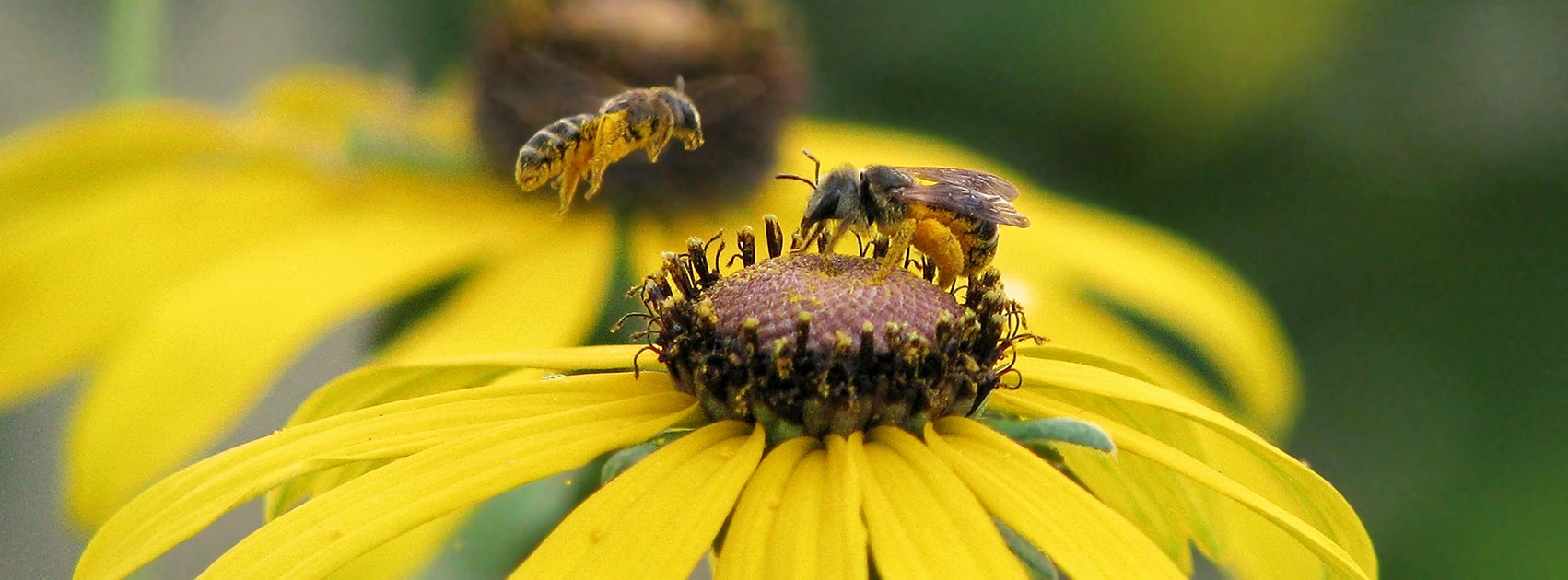Sex in the garden — just what’s going on out there?
by Loraine O’Connell
Gardens are such peaceful places: colorful, tranquil, quiet except for the comforting buzz of a bee or the fluttering wings of a bird. Yet they are a hotbed of (we blush) seduction and sex.
“People often look at plants as being boring and passive, and animals as being interesting and active,” says Dr. Craig Huegel, a speaker at the April 27-28 Florida Wildflower Symposium in Orlando. “But plants make the same choices ecologically that animals do, so it makes perfect sense that reproduction in plants isn’t a completely passive thing.”
Pollination is the transfer of pollen grains from one flower’s anther to another’s stigma, where pollen can then fertilize the ovule, resulting in the formation of seeds.
In their unassuming ways, plants actually control reproduction between the sexes and within their species, Huegel says. “Plants have all kinds of deceptive and interesting ways to lure pollen into them. It’s not haphazard.”
Sex and seduction
Plants seduce pollinators using a variety of wiles, including color, scent, heat, edible pollen and shape, the USDA says. However, that doesn’t mean they’re not selective.
“You wouldn’t expect plants to take the pollen of just any guy that happens to come along,” notes Huegel. “Evolutionarily, that makes no sense in animals. We don’t do that, and female parts of plants don’t do it either.”
You won’t find most plants breeding with their siblings or first cousins, for instance, and self-hybridization doesn’t happen much in nature, Huegel says.
“They’re generally going to get pollen from a different flower of the same species,” he says.
Gender selection, naturally
Many plants also seem to control gender overpopulation.
“There are studies that show plants have some ability to detect the sex ratio of the population around them then choose the sex of their pollen appropriately,” Huegel says. Other studies show that “female plants can detect a genetic deficiency and aggressively keep those pollen from fertilizing their eggs.”
Defense mechanisms plants employ include thorns, prickles and spines, and cellular activity such as toxic chemicals released on undesirable pollinators.
Huegel says his study of botany and the active reproductive lives of plants definitely has affected his outlook.
“I understand that plants are way more complex and worthy of my respect than I might have otherwise,” he says. “When you go through life respecting other life, it affects the way you deal with it. With my pets, I worry about them, take care of them and am happy when they succeed. I don’t think it should be any different with plants.”
As far as Huegel is concerned, the major difference between plants and animals is that plants “can’t run away when they’re scared.”
“They face all the same obstacles that animals do and have done it really well for millions of years, and have done it by being more complex than we give them credit for.”


